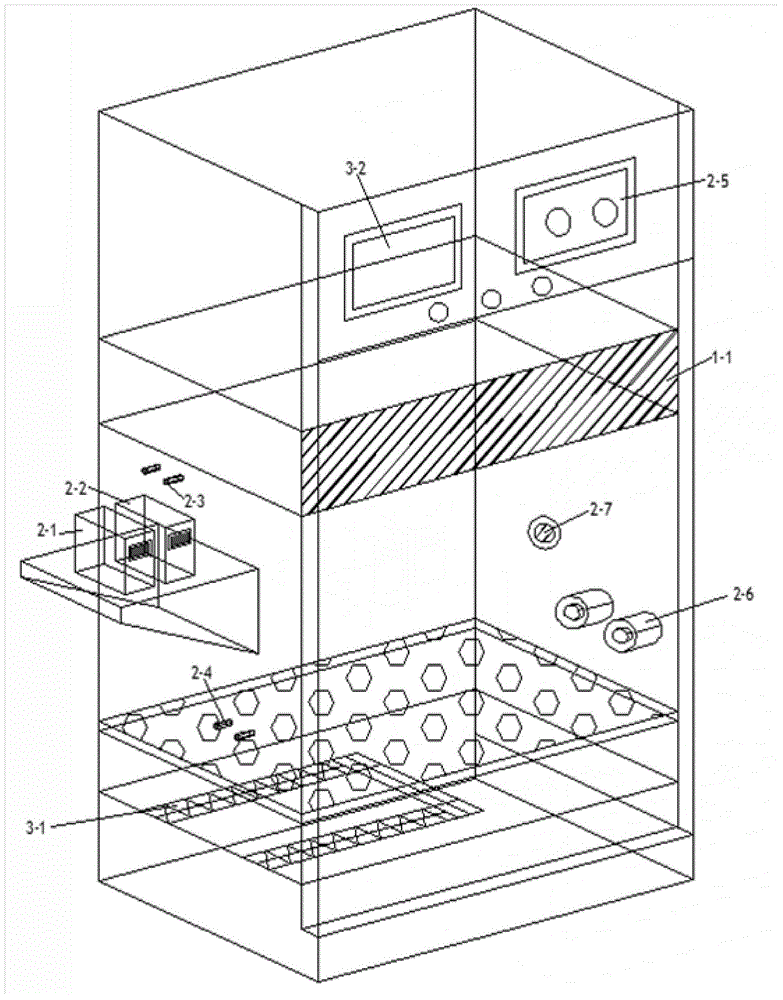Preparation method of blended cement concrete capable of degrading NOx
A cement concrete and concrete technology, applied in the field of photocatalysis, can solve the problems of weakening the catalytic effect, and achieve the effects of improving the tensile strength and bonding strength, enhancing the bonding effect, and strengthening the bonding.
- Summary
- Abstract
- Description
- Claims
- Application Information
AI Technical Summary
Problems solved by technology
Method used
Image
Examples
Embodiment 1
[0033] (1) TiO 2 Fully mix with activated carbon at a mass ratio of 1:1 to make nano-TiO 2 The material is not easy to agglomerate and easy to disperse.
[0034] (2) Cement, TiO 2 Mix the mixture prepared in proportion with activated carbon, ethylene-vinyl acetate polymer and dispersant polycarboxylate in a weight ratio of 1:0.03:0.05:0.01, mix the mixture well, and then mix it with appropriate amount of water and sand Synthetic polymer cement mortar.
[0035] (3) When the cement concrete specimen is made into shape, spread the freshly mixed polymer cement mortar on the surface of the cement concrete to form an ultra-thin surface layer of cement-based photocatalytic mortar with a certain thickness, and then form such a combination cement concrete surface. Cover the surface with a plastic film after molding, and let it stand for one to two days and nights at a room temperature of 20°C ± 5°C and a relative humidity greater than 50%, and then remove the mold. Put the intact ...
Embodiment 2
[0038] (1) TiO 2 Fully mix with activated carbon at a mass ratio of 1:1 to make nano-TiO 2 The material is not easy to agglomerate and easy to disperse.
[0039] (2) Cement, TiO 2 Mix the mixture prepared in proportion with activated carbon, ethylene-vinyl acetate polymer and dispersant polycarboxylate in a weight ratio of 1:0.05:0.05:0.01, mix the mixture well, and then mix it with appropriate amount of water and sand Synthetic polymer cement mortar.
[0040] (3) When the cement concrete specimen is made into shape, the freshly mixed polymer cement mortar is spread on the surface of the concrete to form an ultra-thin surface layer of cement-based photocatalytic mortar with a certain thickness, thereby forming such a combination Cement concrete surface. Cover the surface with a plastic film after molding, and let it stand for one to two days and nights at a room temperature of 20°C ± 5°C and a relative humidity greater than 50%, and then remove the mold. Put the intact te...
PUM
 Login to View More
Login to View More Abstract
Description
Claims
Application Information
 Login to View More
Login to View More - R&D
- Intellectual Property
- Life Sciences
- Materials
- Tech Scout
- Unparalleled Data Quality
- Higher Quality Content
- 60% Fewer Hallucinations
Browse by: Latest US Patents, China's latest patents, Technical Efficacy Thesaurus, Application Domain, Technology Topic, Popular Technical Reports.
© 2025 PatSnap. All rights reserved.Legal|Privacy policy|Modern Slavery Act Transparency Statement|Sitemap|About US| Contact US: help@patsnap.com


